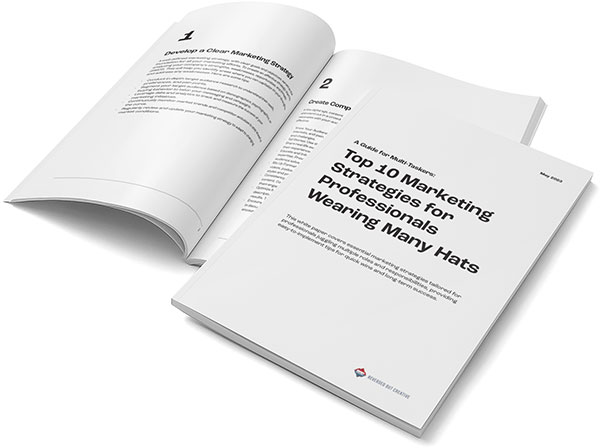
Keyword clustering refers to the process of producing a group of keywords that are conceptually linked to targeting a page, rather than just focusing on one targeted keyword.
Keyword clustering is also known as keyword grouping. It is similar to traditional keyword research but performed on a much larger scale. The aim is to examine data sources (such as customer behavior data, industry trends, and competitor strategies) to create a business-specified group of keywords that you can slice and dice to make your SEO.
By generating more keywords aka a “cluster,” you will learn more about how keywords relate to one another and which terms are beneficial or used by the audience and how to better learn about target audience intent.
Different Types Of Keyword Clustering
There are two types of keyword clustering:
- Soft Clustering
Soft clustering, also known as fuzzy clustering, is where a data point (in this case keywords and phrases) can be owned by numerous clusters at the same time.
- Hard Clustering
With hard clustering, the data point belongs completely to a single cluster.
Importance Of Keyword Clustering
Search engines are advanced and can understand context and keyword synonyms, so they rank pages for groups of keywords instead of just one keyword. Keyword clustering improves your website SEO strategy.
When you target multiple keywords and phrases, rather than just focusing on a single one, this allows the website to set up more reach and better visibility by enhancing its ranking and traffic.
Keyword clustering also compels a company or brand to study their website in-depth and create content that is more extensive and thorough. This leads to higher quality content, which leads to improved user experience.
Multiple Keywords?
This part truly puzzles a lot of people, because years ago we have been focused on allotting only two to three keywords to a single piece of content.
Times have changed, though, and now we are more concentrated on selecting user intent than keywords.
The whole idea of creating clusters is based on how people search for and consume information. Since there are so many reasons people seek information online, these clusters of topics allow us to cover all of our bases.
When you are assigning multiple keywords to a single piece of content, you want to make sure that they are closely related to each other, such as:
- Digital marketing
- Digital marketing tips
- Digital content marketing
- Digital marketing tools
- Online marketing for beginners
You get the idea. As long as your keywords are very similar and you work them into a piece of content, you can rank for multiple keywords; giving you more opportunities to be found in search engines.
How To Conduct Keyword Clustering
- Collect the Keyword Data
- Narrow the Keyword List
- Identify the Most Suited
- Gather Keywords Together
- Combine Them Into Your Content
Let’s discuss each one of these steps one by one in detail:
Collect The Keyword Data
The first and foremost step of keyword clustering is to do quality keyword research. Gather all the keyword data from all possible sources. Check your website, brand, and company, and try to find who your audience is, and what they are looking out for.
Do competitor research and try to figure out what keywords they are ranking for. Find the following resources for keyword information and assemble them all together in a sheet:
- Prevailing Keyword Research
- Website User Behavior/Customer Data
- Focused Keywords/Topics Covered by Rivals
- Free Online Evaluation Tools – Google Analytics, Moz, SEMrush, etc.
Construct a big list of each and every keyword variation that might apply to your business. Make the list until you have hundreds of words to work with. Give a thorough check and delete the repeated ones and move on to the next step.
Narrow The Keyword List
After gathering all of the keywords, arrange them in related groups. You can do this manually or with the help of a tool. If you have chosen to do it manually ,then use a spreadsheet to inspect how many times a keyword is searched for. Find out which ones are salient, and split them into topics.
On the flip side, there are plenty of tools, both free and paid, that you can use to make your keyword clusters. Some of them are:
- SE Ranking
- Wordstream
- SpySerp
- SpyFu
You may analyze that a lot of them use the same focus keyword but with different subcomponents. For example:
- Best Web Design
- Most Affordable Web Design
- Web Design Strategies
- Best Affordable Web Design
The list is endless. Now you may have figured out the focused keyword is web design here and subcomponents are best, most affordable, strategies, and best affordable. You need to not only focus on the main keyword, but also analyze the different variations of the main component and examine how many times they pop out. Make a list and form a group for the next steps. This can all be done with the aid of online tools.
Identify The Most Suited
Now, you have collected a good number of keywords. The next most prominent step is to find the best-suited keyword to attract organic traffic for your audience. From the above list which you have prepared, you can easily access the required information.
Look at the list and ask yourself the following questions:
- Which keywords make the most sense for your content writing?
(For instance: Nasty web design may be the most popular searched term but it has a negative approach to your business and the best website design will help you approach the target audience and be good for your business.)
- Which terms are more suitable for your business?
- Which terms are most competitive (cut-throat)?
Gather Keywords Together
After responding to all of the questions, you may have gotten an idea of which keywords are beneficial for your company. Look for patterns in these lists and group your keywords together in different classifications. A usual choice is grouping by marketing funnel stage:
- Awareness/Lead generation keywords
- Consideration/Lead nurturing keywords
- Purchase/Conversion keywords
Glance for organizational themes in between your keywords and compile them to create categories. If you are struggling here, look into online tools that can do it for you. There are numerous great options out there that can automatically separate keywords into groups—a great place to start if nothing else.
Keep in mind that there is no right or wrong category. It is entirely dependent on your preferences. At the end of this step, you should have several grouped keyword lists centralized around specific themes (as well as frequency data and competitiveness rankings). This is the framework you need to optimize your content.
Combine Them Into Content
The last step is to take your keyword clusters and apply them to your content.
Once you have gone through the process of searching and clustering your keywords, you need to integrate them into your content.
This could be through generating fresh content that select a range of your clustered keywords or rehabilitating old content with your new keyword clusters.
There are a plethora of ways to approach this. You can go by category and approach the optimization blog-by-blog, adding keywords and refreshing the material with relevant search terms. Another approach is to look at the keyword categories and look for recurring themes that can inform future content production.
You should also amalgamate keyword clusters to boost your on-page SEO, this includes meta-data, alt-text, and headers.
Either way, you are improving your content (and your keyword clustering SEO) through a disciplined approach built on data rather than guesswork or instinct.
Boosting Traffic Through Keyword Optimization
A solid keyword clustering strategy does more than just boost your page ranking; it builds a keyword clustering SEO profile that’s resilient. Content inspired by dozens of focused keyword phrases will get found more and be more opposed to the ebbs and flows of SEO changes.
When compared to the traditional methods of optimizing each page for only one or two keywords, it’s a no-brainer. Keyword clusters take a mature approach to SEO that companies need to stay competitive—both now, and in the coming years.
Final Thoughts
Keyword clustering is underestimated, overlooked, and ignored at large. It creates a massive new opportunity to optimize for terms where none existed. Sometimes it is just building one phrase or a few sentences embarking on a long-tail keyword here and there that will bring in that incremental search traffic for your site. Do this dozens of times and you will keep getting incremental increases in your organic traffic.
Aside from improving SEO, keyword clustering is also useful because it assists you in making the most of your time. Once you have conducted keyword research to find the best ones for your business, you can assemble them into groups by different themes. Rather than picking keywords and content at random, you will have a well-defined plan that makes more sense for your readers and your search engine performance.
Contact Us
At Reversed Out Creative, we understand the challenges and opportunities presented by AI disruption. Our team of experts specializes in web design, SEO, graphic design, and digital marketing services. Reach out to us through our contact form to learn more about navigating the evolving job market and embracing the potential of AI. Together, let’s shape a future that combines human ingenuity with the power of AI.
Next Article: Long-Form Content – Why Should Businesses Invest More In It?
©2025 Reversed Out LLC. All rights reserved. Privacy Policy.


